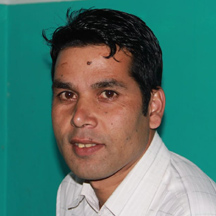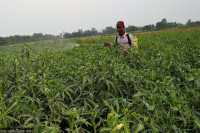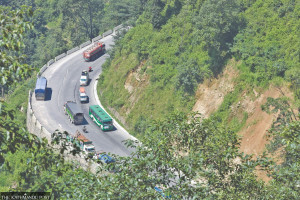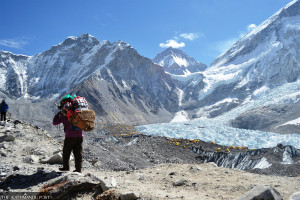Money
Low price threatens future of large cardamom farming
Nepal is the world’s largest producer of large cardamom.
Ananda Gautam
The price of large cardamom has reached one of the lowest levels in the local market, trading at 625 per kg.
Large cardamom producers say that prices are down sharply but the production costs are increasing, which has become worrisome for producers in Nepal’s eastern hills.
“I used to sell large cardamom at Rs2,000 to Rs2,400 per kg a few years ago,” said Bhim Bahadur Gurung, a local farmer. “Now, the price has plummeted to Rs625 per kg.”
Lack of manpower during the harvesting season is another concern for farmers in Taplejung.
Gurung of Phungling Municipality-6, who has been in the large cardamom business for the past two decades, says he has been struggling to find farm hands during the harvest season, which generally begins in October. “During the harvest season, 200 to 250 labourers are required on my farm,” he said. After plucking the fruit, it needs to be dried and stored properly.
Gurung normally visits the neighbouring villages to search for workers. “Currently, I have hired a few students from Phungling on a part-time basis,” Gurung said.
Nepali large cardamom– also known as ‘black gold’ or ‘black cardamom’ and locally called alainchi – belongs to the botanical family called zingiberaceae and is one of the most expensive spices in the world. It is an evergreen, perennial and herbaceous plant grown on north-facing hill slopes, according to a government report.
Ganesh Sigdel, who runs a school in Phungling, shares the same story.
Every year, he travels to his farm and spends a month during the harvest season.
Sigdel of Phaktanglung Rural Municipality-5 said every year he struggles to find sufficient workers. “I even travel to neighbouring districts such as Terhathum, Panchthar and Sankhuwasabha to search for farm hands.”
As prices have reached rock bottom, farm life holds no charm. As a result, there is a lack of manpower, according to farmers.
Around a decade ago, the daily wage of workers working on large cardamom farms used to be Rs1,000 a day. These days they hardly get Rs500 due to the low-profit margin.
While men and women workers get the same wage, those who have to work during the night to roast the fruit are paid extra.
When the price of large cardamom reached Rs3,000 per kg, many farmers, mostly youth, opted to grow cardamom, villagers say.
“However, the number of people started to quit cardamom farming because of the price factor,” said Balmani Baral, chairman of the Large Cardamom Development Center, Fikkal in Ilam.
Santosh Thapa, chief of the Agriculture Knowledge Centre, Taplejung, said that farmers have been less attentive to cardamom farms in recent years.
“Though the prices have decreased, farmers could still earn a decent income by increasing production,” said Thapa. “However, the number of farmers visiting us for consultations and carrying out soil tests is extremely low.”
Farmers argue that a lack of coordination among the technicians from the Agriculture Knowledge Centre, Cardamom Zone and local bodies has also affected cardamom farming in the district.
“We have not found these three institutions coordinating with each other,” said Gurung. “They carry out their own programmes in the way they like.”
Lack of decent storage has also been a major issue affecting the prices of large cardamom. While some farmers store them in their homes, the majority of the produce is taken by the traders and stored in godowns in Phungling.
While the godowns themselves lack quality, fungi can affect the cardamom if stored for a long time.
Baral said that they have proposed to the authorities to provide them with 5 to 7 ropani of land in Phungling to build a decent storage plant.
It would have created more employment opportunities, he said.
Nepal is the world's largest producer of large cardamom. Other countries where this spice is produced are India and Bhutan.




 24.12°C Kathmandu
24.12°C Kathmandu














